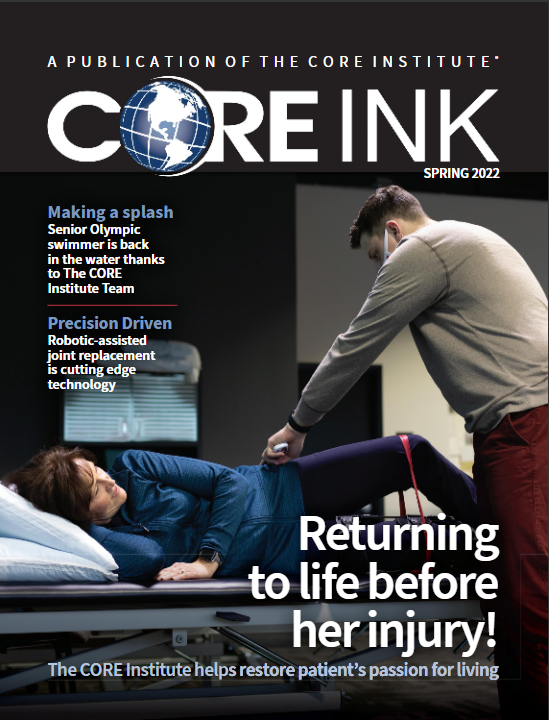As more and more people telecommute, weight gain and an increase in health issues are being attributed to working from home.
Prior to the home office boom, there were benefits from what is known as “incidental exercise,” which includes walking to and from parking areas or public transportation to get to the office, as well as moving around to talk to colleagues and perform tasks.
More Time
Jesse Anderson, MD, FRCSC, dual trained as a joint replacement and sports medicine specialist, says that even when going into an office, an exercise plan should be part of a healthy lifestyle. While there are a few who walk or ride their bikes to work, most Americans are anchored to their cars and desks. Walking while on the phone or on a treadmill or standing desk is helpful but doesn’t deliver the intensity for real results.
Working from home actually can contribute to fitness by offering many opportunities for activity. By telecommuting, most people gain an added hour or more in the day. Commuting times in Arizona average 25 minutes. Therefore, most people have an added hour everyday to get in a morning walk or afternoon bike ride.
Motivating Gadgets
Dr. Anderson points out that the gadgets, gear and fancy watches many people use to pursue such trends as counting steps and motivating weight loss may be gimmicks but they have the value of putting money where goals are. Once the latest technology, pricey running shoes, or an elite bike is bought, people tend to use the products to justify the purchase.
Whether you gear up or not, follow the World Health Organization recommendations of at least 150 minutes of moderate-intensity physical activity throughout the week, or 75 minutes of vigorous intensity. To achieve exertion in the correct moderate-intensity range, look up heart rate targets by age on the American Heart Association website. To accurately track intensity, there is an endless array of technology and many treadmills and other equipment have built-in monitors.
“You want to break a sweat,” Dr. Anderson said. “Set a realistic goal and pick an activity you like at a time best for you or you’ll just get frustrated and quit.”
Make a plan
He stresses that one day of intense exercise is not equal to three days of moderate. Weekend warriors who do little during the week and then go for a grueling eight-hour hike, run a marathon or play aggressive contact sports usually wind up in his office with an ruptured Achilles or some other injury that is caused when the body isn’t prepared for exertion.
“Make a plan for regular exercise,” he recommends. “People often think if they don’t get 10,000 steps per day or some other more intense goal, they might as well not exercise and that thinking is counterproductive. Any activity is good. We see benefits even with an extra five to 10 minutes per day.”
SUBSCRIBE TO CORE INK NEWSLETTER
Sign up to receive stories and information from The CORE Institute, including expertise from our providers and news about the latest technology advancements helping our communities.

